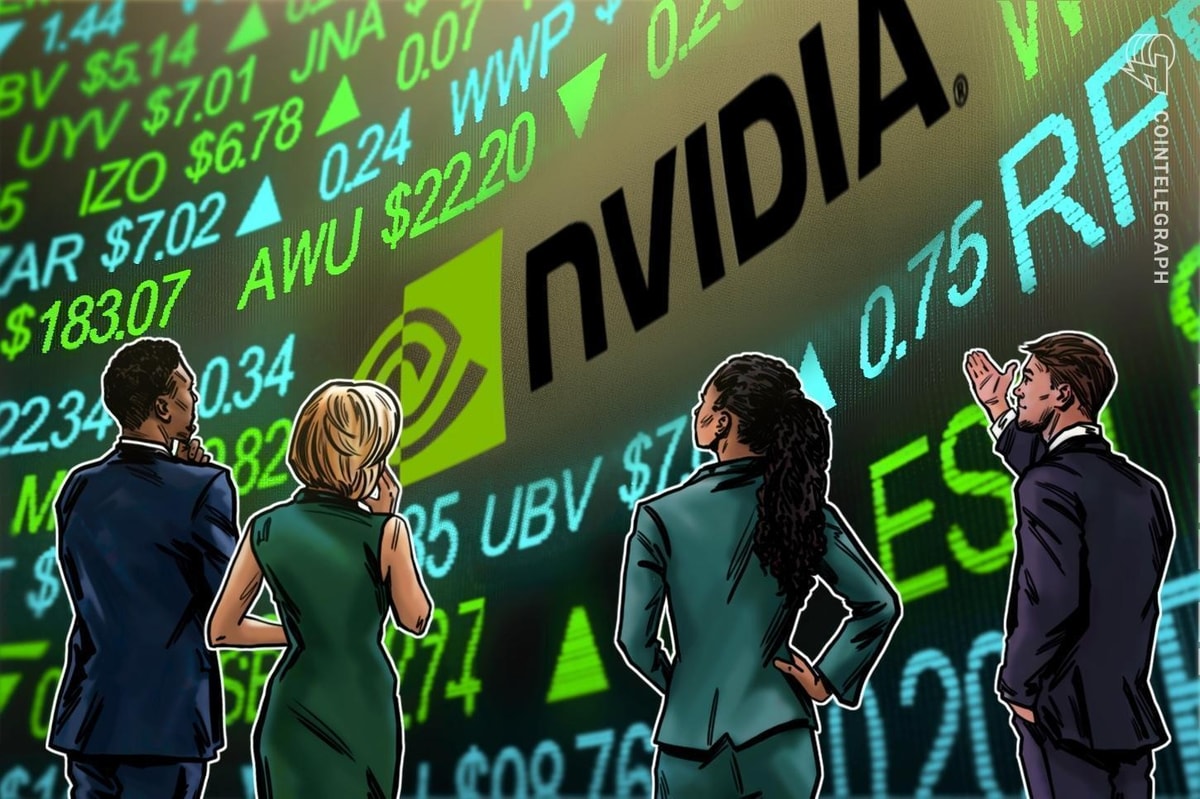Nvidia’s recent stock performance is sending ripples through the cryptocurrency market, specifically within the burgeoning AI crypto sector. The tech giant, a major player in the hardware powering artificial intelligence advancements, has experienced a significant downturn, forming what market analysts call a “death cross.” This bearish signal, characterized by the 50-day moving average crossing below the 200-day moving average, historically precedes periods of substantial price decline. For Nvidia, this pattern is particularly concerning, given its previous association with a nearly 50% retracement following a similar event.
This raises a crucial question: will the AI crypto market follow suit? The correlation between Nvidia’s stock price and the performance of AI-focused cryptocurrencies has been a subject of debate among investors and analysts. While some believe a strong link exists, fueled by the undeniable reliance of many AI projects on Nvidia’s high-performance GPUs (Graphics Processing Units), others argue that the relationship is more nuanced and less predictable.
The argument for correlation rests on the simple premise of supply and demand. Nvidia’s GPUs are essential for training and running many of the complex algorithms underpinning AI crypto projects. A significant drop in Nvidia’s stock price could signal weakening demand for their hardware, potentially impacting the development and growth of AI crypto projects. Reduced hardware availability or increased costs could hinder innovation and project scalability, leading to a downturn in the market valuation of AI cryptocurrencies. This could manifest as reduced trading volume, lower prices, and decreased investor confidence.
However, the counterargument highlights the inherent differences between the two markets. Nvidia’s stock price is subject to a multitude of factors beyond just AI adoption, including broader economic conditions, competition within the semiconductor industry, and overall investor sentiment toward the tech sector as a whole. Furthermore, the AI cryptocurrency market is still relatively nascent and volatile, influenced by its own unique set of drivers, such as regulatory uncertainty, technological advancements, and speculative trading.
Therefore, while a negative correlation might seem plausible on the surface, assuming a direct and proportional relationship could be a risky oversimplification. The impact of Nvidia’s “death cross” on AI cryptocurrencies is likely to be indirect and complex, mediated by a multitude of interconnected factors. The degree of impact will probably depend on the specific projects, their reliance on Nvidia’s hardware, the broader market sentiment, and the overall macroeconomic environment.
Investors should proceed cautiously, recognizing that while Nvidia’s stock price can serve as a useful indicator, it is not a definitive predictor of AI cryptocurrency performance. A diversified investment strategy, thorough due diligence, and a comprehensive understanding of both the fundamental and technical aspects of both the stock market and the cryptocurrency landscape are crucial for navigating this potentially volatile period. It’s essential to avoid emotional decision-making and to base investment choices on a thorough analysis of market trends and individual project specifics rather than relying solely on the performance of a single technology company. Ultimately, the future trajectory of AI cryptocurrencies remains uncertain, requiring careful monitoring and a nuanced approach to investment strategies.




Leave a Reply